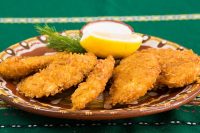by admin | February 24, 2020 10:45 am | Main, Organization, Success, Well Being
 We all have areas where we want to improve; health, work, family, you name it. But reality sets in along with a busy schedule that doesn’t leave any space for quiet time, let alone individual development. We also rarely have the willpower we need to see it through. Or maybe we just don’t know where or how to start.
We all have areas where we want to improve; health, work, family, you name it. But reality sets in along with a busy schedule that doesn’t leave any space for quiet time, let alone individual development. We also rarely have the willpower we need to see it through. Or maybe we just don’t know where or how to start.
Not being able to define your own long-term goals will end up in a life that’s devoid of meaning or direction. You start losing that spark and the motivation to get up each morning wanes.
Experts define a personal growth plan as “the process of creating an action plan based on awareness, values, reflection, goal-setting, and planning for personal development within the context of a career, education, relationship or for self-improvement.”
An individualized growth plan can help you achieve the vision you have of yourself. It’s something we need to consciously think about and strive toward. If you don’t plan your own development and growth, no one else will.
Here are four steps you can take for a well-developed, easy-to-implement, personalized plan.
1. Know Thyself
In order to plan for the future, you have to reflect on your past experiences, your weaknesses, and strengths; they’ve made you who you are today. You also have to clarify your own unique values, such as integrity, respect for others, leadership, honesty. Your values define your stance, whether it’s at the workplace, with family and friends, and in your romantic relationships. Moreover, there are several essential questions you have to ask yourself:
- What do I want to become in life?
- What are my achievements up until now?
- What are my personal goals?
- What are my career ambitions?
- What steps have I taken to pursue these goals and ambitions?
2. Develop your vision
Once you’ve asked and answered these questions, you’ll have a clear idea of who you are and what you want out of life. This takes us to the second step; developing your vision. A smart tip is to provide yourself with several options to reach your next goal.
That way, if something goes wrong or you face an obstacle, you can switch to another path. Be flexible in your planning because usually, people tend to underestimate how long a particular project will take.
Another point people tend to not pay attention to is what they don’t want to do. If you’re at work, you can make a list of what-not-to-do, for example:
- Check emails as soon as they come in
- Keep too many tabs open at once
- Keep a cell phone on your desk
- Check social media while you’re working
3. Assess your present-day situation
Implementing your plan can be difficult at first. But with dedication and an eye on the prize, you’ll soon find that it becomes a daily habit. It was Jim Ryun who said, “Motivation is what get you started. Habit is what keeps you going.”
Putting your strengths to good use will harness your energy levels so that it’s utilized efficiently. You can set up milestones along the way because smaller goals give you the motivation and drive you to need to get to the big ones. And each time you reach a milestone or achieve one of the small goals, reward yourself for your hard work.
4. Review your progress
Each project needs to be reviewed and assess, and your exclusive growth plan is no different. You can do it on a monthly basis or every couple of months, whatever feels comfortable for you. But it’s crucial that you take a step back and look at all the hard work you’ve accomplished.
Check to see if you’ve left anything out or missed any deadlines. Or maybe the mini-goals you set up last time don’t fit your criteria any longer, they need tweaking or readjusting. Reflect on your experience and consider everything you’ve learned. This will ensure that you keep moving forward according to your long-term plan and the vision you’ve set up for yourself.
On a final note, you can draw up the perfect plan, but if you don’t follow through, you won’t get anywhere. Everyone needs the practice to develop and grow, even if it means stepping out of your comfort zone. Having something to strive toward can renew your self-confidence and passion for life.
by admin | February 10, 2020 9:16 am | Cooking ideas, Diet Tips ( I lost 160 LBS), Health, Main, Recipes, Well Being
 My former neighbor, Mary Young, a relatively new empty-nester, remarked on how free she feels with her nine kids out of the house. This feeling is common. Joy Smith, author of “,” encourages people to take advantage of it: “For the first time in years, you can cook because you want to, not because you must. You have fewer people and palates to please, so cook in ways you’ve never dared.”
My former neighbor, Mary Young, a relatively new empty-nester, remarked on how free she feels with her nine kids out of the house. This feeling is common. Joy Smith, author of “,” encourages people to take advantage of it: “For the first time in years, you can cook because you want to, not because you must. You have fewer people and palates to please, so cook in ways you’ve never dared.”
- Try new recipes. A majority of empty nesters say they enjoy exploring foods that their children would not eat, according to the July 2005 Pillsbury Empty Nester Survey.
- Think smaller. With just the two of you at home, there’s little need for family-size packages.
- Buy perishables with care. To reduce spoilage, buy only a few pieces of fruit and small amounts of vegetables at a time. Choose dairy products and fresh meats with the latest expiration date.
- Maximize nutrition. Pick foods that deliver the most nutrition for the bite. For example, broccoli (vitamins A and C), legumes (fiber) and fortified whole-grain cereals like Whole Grain Total®. As you get older, you need fewer calories but the same, or sometimes greater, amounts of key nutrients.
- Stock up on plastic containers. Prepare recipes that serve four or six and divide up the extra into two-serving portions. Label, date and refrigerate or freeze.
- Swap homemade dishes with a friend. It’s a great way to add variety to your menu.
- Get a new gadget. A vacuum sealer seals out air and preserves the moisture and flavor of the original dish. “I seal and freeze leftovers in one-meal portions for fresh-tasting dinners anytime,” suggests Smith. “Reheat in the microwave or boil in the bag on the stovetop.”
This recipe makes four servings, two for now and two for tomorrow.
Crunchy Garlic Chicken Breasts
11/3 cups Whole Grain Total® cereal
2 tablespoons chopped fresh parsley
1/2 teaspoon paprika
1/4 cup skim milk
2 teaspoons chopped fresh chives
1/4 teaspoon salt
1/4 teaspoon garlic powder
4 boneless skinless chicken breasts (about 11/4 lb)
Cooking spray
- Heat oven to 425°F. Spray 13×9-inch pan with cooking spray.
- Crush cereal. In a shallow dish, stir together cereal, parsley, and paprika. In another shallow dish, stir together milk, chives, salt, and garlic powder. Dip chicken into milk mixture, then coat lightly and evenly with cereal mixture. Place in pan. Spray top of chicken with cooking spray.
- Bake uncovered 20 to 25 minutes or until juice of chicken is clear when the center of thickest part is cut.
by admin | February 3, 2020 8:18 am | Holidays, Love, Main, Today's Thought, Well Being
Just to show you how wonderful I am I’m posting all these Valentine quotes. Maybe one will be just perfect for your valentine.












I hope One of these is the perfect fit for your Valentine!
by admin | January 20, 2020 1:57 pm | By Doc Mueller, Health, Main, Meditation, Psychic, Success, Well Being
 Different Forms of Meditation
Different Forms of Meditation
There are no special tricks to meditating; no special posture or breathing rhythm is required. Once you have gotten the knack of it you can meditate anywhere during any activity. Some readers have succeeded in reaching this altered state of consciousness while reading about my sand meditation, and perhaps you too may realize this transformational state of consciousness as you read on…
Sometimes meditation opens a door into the mysteries of creation. If we allow ourselves to pass through this door, there is no telling what we may encounter on the other side. Do not become discouraged if you have tried to meditate in the past and not gotten any remarkable results. Meditation is a mystical process and it may take a while to learn how to quiet your mind and open yourself to all the present moment has to offer you.
My meditation began while sitting on a beach. My hands were sandy. I rubbed my thumb and forefinger together, feeling the grains of sand between them slipping away until only a single grain of sand remained.
I could feel the shape of the grain of sand distinctly as I rolled it back and forth between my thumb and forefinger.
The longer I rolled the grain of sand about the more defined my awareness of the grain of sand became. The more detailed my experience of the grain of sand became, the larger it appeared to be.
While I could clearly feel the tiny grain of sand trapped between my thumb and finger roll about across the grooves and ridges of my fingerprints, the grain of sand appeared to be growing larger and larger as I contemplated it.
The grain of sand continued to grow, encompassing the beach and then the world. Before long, the grain of sand had grown to an infinite size and it now encompassed all of creation, yet I still held the tiny grain of sand between my thumb and forefinger, rolling it about across the grooves and ridges of my fingerprints.
The tiny grain of sand was intimately connected to every part of creation and all of creation existed within it, even as it existed within my grasp. I communed with the grain of sand, aware of its infinite connectedness to everything else; through the medium of the grain of sand, I became aware of my own infinite connectedness with all of creation.
The sand spoke to me of eternity. It told me tales about creation and the infinite nature of our existence in creation. From the grain of sand, I learned that every tiniest part of creation is a living being experiencing creation and sharing in the process whereby creation makes everything manifest.
My meditation with a grain of sand always produced a feeling of intense bliss. It was an eternal meditation that transcended the time and place where it began to continue throughout all of creation. From time to time, I would return to this meditation, engrossed by the wisdom and experience of a single tiny grain of sand.
Can 8-Minute Meditation Give You a Quiet Mind and Change Your Life Forever?
What exactly is meditation? It seems that so many people nowadays are hooked up with this form of activity. By definition, meditation is often used to describe the individual’s state of intense attention on an object of awareness or thought. The individual tries to turn his or her attention inward. Meditation is said to be of Vedic Hinduism origin. This is usually practiced in the eastern religions, but now even the western culture is already involved in such activity.
People want to practice meditation so that they can focus their mind to God for their personal development, to attain peace of mind, and to be healthier.
Many Americans are now involved in some form of meditation. According to Time Magazine, there is one meditation practice that can be used by almost anyone. Mor available information can be considered as the basic primer of Americans wanting to begin meditation but have no idea where to start.
There was a book published last November 2005 authored by Victor Davich that is all about the 8-minute meditation. If you purchase the book and study it carefully, you will learn a lot of things about meditation, and you can do it in just 8 minutes.
Almost every individual who starts with anything new to him or her will often have lingering questions, hopes, and doubts about it. There are even people who hope that when they begin to meditate, they will be enlightened. Or perhaps you’re one of those individuals who think that meditation is just like an exercise or diet that you’ve been trying to do for the past few months. But these things are normal; so don’t be surprised if you’re also like that.
The best thing to do is to face all the positive and/or negative expectations, and after doing so, forget about them and start with a clean slate. If you want to try the 8-minute program of meditation, you should learn how to approach it one minute at a time.
While many people think that meditation is a simple practice, then you’d better think twice. You might not notice it, but your mind is always racing from here to there. You can’t concentrate. According to the book’s author, you must watch your breath. This is the very first step to meditation. Do your inhalation and exhalation by breathing deeply. If you always do this and keep on practicing, you can become good at meditation.
As a word of reminder, if you catch yourself thinking about other things, or in other words, your mind strays off, focus again on your breathing. After all, meditation is all about concentrating and if you realize that you’re not on the right track, you can always return to that state of mind gently. Don’t get discouraged easily and keep on practicing. There is a famous saying that says practice makes perfect, so always keep that in mind. If you quit easily, then you will remain a quitter.
Meditation can help you in achieving peace of mind. With all your problems at work, in your family, and the entire world, you should at least experience a few minutes of peace. Don’t miss this chance to attain personal development at no cost at all.
 Meditation and its benefits
Meditation and its benefits
One of the most important benefits of meditation is that it dramatically helps a person’s physical state. Among the physical benefits of meditation involve the heart through a deep rest because it decreases the person’s metabolic rate as well as the heart rate, which leads to the reduction of workload for the heart. Aside from that, it is also known to lower the levels of a person’s cortisol as well as dissolving the chemicals that are closely associated with everyday stress.
Other physical benefits of meditation also include reduced free radicals in the body by eliminating unstable oxygen molecules, decreases a person’s high blood pressure, develops the ability to have more resistant skin, lowering or dropping the person’s level of cholesterol, improve airflow to the lungs to aid easy breathing, delays biological aging and increases the levels of DHEAS in older people.
When it comes to psychological factor, meditation aids in increasing the person’s brain wave coherence, decreasing anxiety levels, often irritability, deep-set depression, and swing of moods, improves the person’s memory as well as his or her learning ability, increases the person’s capacity for self-actualization, increases the person’s feeling of youthfulness and rejuvenation as well as vitality, leads to positive outlook in life and joyfulness, and increases a person’s emotional status and stability.
Other noted benefits of meditation for an individual and his or her community include:
– Relaxation to the person’s body, mind, and soul.
– Rejuvenation of energy to face huge challenges and stress ahead.
– Healing of various illnesses that are closely associated with the mind and the body.
– Making a more stable person in terms of emotions.
– Developments of relaxed family life and instilling positive outlooks in life to younger people.
– Enhances the person’s ability to make his or her mind function properly.
– Letting a person discover his or her inner self, this, in turn, releases the creativity in them.
– It helps people to free themselves from various vices and addictions such as alcohol and cigarettes as well as in multiple medications such as tranquilizers and narcotics.
– It also helps a person to gain higher self-confidence, thus, resulting in stronger power of the will.
– It can be an effective and safe way of discovering one’s self instead of focusing the attention to other unhealthy practices.- It aids in the development of the power of the mind.
The list goes on about the benefits of meditation in an individual and to his or her community. In so many cases, these are positive benefits.
by admin | January 6, 2020 1:04 pm | By Doc Mueller, Crafts, Love, Magic, Main, Meditation, Psychic, Well Being
 The History of Candle Making
The History of Candle Making
The art of making candles has been around since primitive times. Of course, as time went by they become much different in design than what they were back then. In the early days, candles were a necessity for heat and light. Today they serve as decorations, wonderfully smelling mechanisms in our homes, and offer light for romantic dinners and baths.
The first known use of candles is not completely known. The remains of clay candle holders that date back to 4 BC have given us the knowledge that they have been in use for a very long time. Those clay candleholders were found in Egypt.
Candles were also used in ancient times in both China and Japan. These candles were made of wax extracted from insects and seeds. The taper candles of India were made from the wax extracted from boiled cinnamon. Candles are not known to exist in American until 1 AD. It is believed Native American’s burned oily fish and the back of the Cerio tree. When settlers came to New England, they used similar techniques to extract wax from bayberries. Many modern candle makers still use that process to make bayberry candles. However, it is quite expensive to do so.
Tallow was the product used to make candles in the 1600s and 1700s. This is a byproduct of animal fat. The product worked well but had a foul odor, especially when it was burning. Beeswax and paraffin wax both were introduced in the early 1800s, and tallow stopped being used.
The dipping process for taper candles as we know it today began in 13 AD. Traveler merchants went door to door from town to town. While there, they made taper candles for individuals in their homes. Around 15 AD the idea to use molds for various types of candles was introduced in Paris. While this greatly improved the candle making process, there were still issues with getting the candles to burn properly.
In the 1800s, candle makers felt the wick was the weakest area of the candle as well as the cause for defective burning patterns. A braided wick was developed in 1825 that seemed to greatly improve the burning of several types of candles. By 1830, a process was in place to make candles using paraffin wax and molds. These candles were of good quality and burned well.
As gas and electricity were introduced, the candle making process continued to evolve. It became much easier and faster to melt the paraffin wax. It is believed that the reason so many of the elements of candle making stayed the same, including the hand dipping process is that the popularity of candles diminished with the introduction of electricity.
Today, candle making is a well-known art form. There are many companies that manufacture wonderful candles with some very unique fragrances. There are also small businesses that still make their candles by hand (at home) in their kitchen. Candle making is a great hobby and fun activity for the whole family to be involved in.
Candles are now used more for luxury and pleasure than for light or heat. The candle industry continues to grow with new types of candles being introduced all the time. The amount of colors, fragrances, and types of candles to choose from in the marketplace is absolutely amazing.
Candles are a common home decorating item. They are used to accent any room in your house. They are common centerpieces for dinner parties and formal occasions. The unity candles that are presided over at many weddings hold a deep sense of tradition in the American culture.
The art of making candles has definitely changed over time. If you are interested in trying your hand at it, choose a candle that is fairly easy to make such as the container candle or the votive. This will allow you the chance to get used to the process. There are several good candle making kits available for a low price as well as books to give you tips and assistance along the way.
Enjoy,
I will be doing a couple more articles on “actually” making candles
by admin | December 30, 2019 8:53 am | Cooking ideas, Diet Tips ( I lost 160 LBS), Health, Main, Success, Well Being
This year has been a bit of a challenge. Starting something new and sticking with it is not always the easiest thing. I have not promoted the web site this year because like all of us I wanted a little content here before I went out Bragging to the world. :-). This is the last Post for 2019 (Happy New Year) next year will be a new challenge with new ideas. Stick with me because a lot of free ebooks and information are coming your way in the next year of my plan.
 9 Healthy Foods That Lift Your Mood
9 Healthy Foods That Lift Your Mood
When you’re feeling down, it can be tempting to turn to food to lift your spirits. However, the sugary, high calorie treats that many people resort to having negative consequences of their own.
Thus, you may wonder whether any healthy foods can improve your mood.
Recently, research on the relationship between nutrition and mental health has been emerging. Yet, it’s important to note that mood can be influenced by many factors, such as stress, environment, poor sleep, genetics, mood disorders, and nutritional deficiencies, Therefore, it’s difficult to accurately determine whether food can raise your spirits.
Nonetheless, certain foods have been shown to improve overall brain health and certain types of mood disorders.
Here are 9 healthy foods that may boost your mood.
Share on Pinterest
- Fatty fish
Omega-3 fatty acids are a group of essential fats that you must obtain through your diet because your body can’t produce them on its own.
Fatty fish like salmon and albacore tuna are rich in two types of omega-3s — docosahexaenoic acid (DHA) and eicosapentaenoic acid (EPA) — that are linked to lower levels of depression Omega-3s contribute to the fluidity of your brain’s cell membrane and appear to play key roles in brain development and cell signaling
While research is mixed, one review of clinical trials showed that in some studies, consuming omega-3’s in the form of fish oil lower depression scores.
Although there’s no standard dose, most experts agree that most adults should get at least 250–500 mg of combined EPA and DHA.
Given that a 3.5-ounce (100-gram) serving of salmon provides 2,260 mg of EPA and DHA, eating this fish a few times per week is a great way to get these fats into your diet.
From these facts, I have determined that fatty fish such as salmon which are rich in omega-e fatty acids, may lower your risk of depression.
- Dark chocolate
Chocolate is rich in many mood-boosting compounds. That’s the best news I’ve had in a long time about food 😉
It’s likely the sugar may be what improves mood since it’s a quick source of fuel for your brain.
Furthermore, it may release a cascade of feel-good compounds, such as caffeine, theobromine, and N-acylethanolamine — a substance chemically similar to cannabinoids that have been linked to improved mood.
However, some experts debate whether chocolate contains enough of these compounds to trigger a psychological response. I choose to absolutely believe this because “I” am a chocolate expert in my own mind.
Nerveless, I want to mention that chocolate is high in health-promoting flavonoids, which have been shown to increase blood flow to your brain, reduce inflammation, and boost brain health all of which may support mood regulation. Chocolate also has a high hedonic rating, meaning that its pleasurable taste, texture, and smell may also promote a good mood.
Because milk chocolate contains added ingredients like sugar and fat, it’s best to opt for the “dark” chocolate which is higher in flavonoids and lower in added sugar. You should still stick to 1–2 small squares (of 70% or more cocoa solids) at a time since it’s a high-calorie food.
Dark chocolate is rich in compounds that may increase feel-good chemicals in your brain. (Ok I vote for this; do we get to vote?)
- Fermented foods
Fermented foods which include kimchi, yogurt, kefir, kombucha, and sauerkraut, may improve gut health and mood. OK, I am going to be honest and up-front about this “I HATE FERMENTED FOODS” I hope you love them. It’s just a thing I have but to me, nothing is as bad as yogurt. I wish I liked it! I see all those people with light easy snacks and getting over a bad stomach thing with their yogurt but it just makes me want to regurgitate.
The fermentation process allows live bacteria to thrive in foods that are then able to convert sugars into alcohol and acids.
During this process, probiotics are created. These live microorganisms support the growth of healthy bacteria in your gut and may increase serotonin levels.
It’s important to note that not all fermented foods are significant sources of probiotics, such as in the case of beer, some breads, and wine, due to cooking and filtering.
Serotonin is a neurotransmitter that affects many facets of human behavior, such as mood, stress response, appetite, and sexual drive. Up to 90% of your body’s serotonin is produced by your gut microbiome or the collection of healthy bacteria in your gut.
In addition, the gut microbiome plays a role in brain health. Research is beginning to show a connection between healthy gut bacteria and lower rates of depression.
Since up to 90% of your body’s serotonin is produced in your gut, a healthy gut may correspond to a good mood. Fermented foods like kimchi, yogurt, kefir, kombucha, and sauerkraut are rich in probiotics that support gut health.
- Bananas
Bananas may help turn a frown upside down.
They’re high in vitamin B6, which helps synthesize feel-good neurotransmitters like dopamine and serotonin.
Furthermore, one large banana (136 grams) provides 16 grams of sugar and 3.5 grams of fiber.
When paired with fiber, sugar is released slowly into your bloodstream, allowing for stable blood sugar levels and better mood control. Blood sugar levels that are too low may lead to irritability and mood swings.
Finally, this ubiquitous tropical fruit, especially when still showing green on the peel, is an excellent source of prebiotics, a type of fiber that helps feed healthy bacteria in your gut. (This is like that yucky orange stuff lot of people drink in the mornings some are pre and some are probiotics. A robust gut microbiome is associated with lower rates of mood disorders.
Bananas are a great source of natural sugar, vitamin B^, a prebiotic fiber, which work together to keep your blood sugar levels and mood stable. What nature won’t do to make us eat right. (Or is that di do?)
- Oats
Oats are a whole grain that can keep you in good spirits all morning. You can enjoy them in many forms, such as overnight oats, oatmeal, muesli, and granola.
They’re an excellent source of fiber, providing 8 grams in a single raw cup (81 grams).
Fiber helps slow your digestion of carbs, allowing for a gradual release of sugar into the bloodstream to keep your energy levels stable.
In one study, those who ate 1.5–6 grams of fiber at breakfast reported better mood and energy levels. This was attributed to more stable blood sugar levels, which is important for controlling mood swings and irritability.
Although other sources of whole grains can have this effect, oats may be especially advantageous, as they’re also a great source of iron, with 1 raw cup (81 grams) boasting 19% of your daily needs.
Iron deficiency anemia, one of the most common Nutrient deficiencies and is associated with low iron intake. Its symptoms include fatigue, sluggishness, and mood disorders.
Some research suggests that people experience improvements in these symptoms after eating iron-rich foods or supplementing with iron, but more research is needed.
- Berries
Curiously, eating more fruits and vegetables is linked to lower rates of depression.
Although the mechanism isn’t clear, a diet rich in antioxidants may help manage inflammation associated with depression and other mood disorders.
Berries pack a wide range of antioxidants and phenolic compounds, which play a key role in combatting oxidative stress — an imbalance of harmful compounds in your body.
They’re particularly high in anthocyanins, a pigment that gives certain berries their purple-blue-color. One study associated a diet rich in anthocyanins with a 39% lower risk of depression symptoms.
If you can’t find them fresh, try buying frozen berries — which are frozen at their peak ripeness to retain the maximum amount of antioxidants.
- Nuts and seeds
Nuts and seeds are high in plant-based proteins, healthy fats, and fiber.
Additionally, they provide tryptophan, an amino acid responsible for producing mood-boosting serotonin. Almonds, cashews, peanuts, and walnuts, as well as pumpkin, sesame, and sunflower seeds, are excellent sources.
Moreover, nuts and seeds are a large component of both the MIND and Mediterranean diets, which may support a healthy brain. Each of these diets promotes fresh, whole foods and limits your intake of processed items.
What’s more, a 10-year study in 15,980 people linked moderate nut intake to a 23% lower risk of depression (FYI, I LOVE nuts, both the people and the food kind).
Finally, certain nuts and seeds, such as Brazil nuts, almonds, and pine nuts, are good sources of zinc and selenium. Deficiency in these minerals, which are important for brain function, is associated with higher rates of depression — although more research is needed.
- Coffee
Coffee is the world’s most popular drink, and it may make the world a bit happier, too.
The caffeine in coffee (tea) prevents a naturally occurring compound called adenosine from attaching to brain receptors that promote tiredness, therefore increasing alertness and attention.
Moreover, it increases the release of mood-boosting neurotransmitters, such as dopamine and norepinephrine.
A study in 72 people found that both caffeinated and decaffeinated coffee and tea significantly improved mood compared with a placebo beverage, suggesting that coffee contains other compounds that influence mood.
Researchers attributed this boost in attitude to various phenolic compounds, such as chlorogenic acid. Still, more research is needed.
Everyone here gets tired of me saying “ill just make some teas, tea fixes everything. Looks Like I was correct 😉
- Beans and lentils
In addition to being high in fiber and plant-based protein, beans, and lentils, are full of feel-good nutrients.
They’re an excellent source of B vitamins, which help improve mood by increasing levels of neurotransmitters like serotonin, dopamine, norepinephrine, and gamma-aminobutyric acid (GABA), all of which are important for regulating mood.
Furthermore, B—vitamins play a key role in nerve signaling, which allows proper communication between nerve cells. Low levels of these vitamins, especially B12 and folate, have been linked to mood disorders, such as depression.
Finally, they’re a good source of zinc, magnesium, selenium, and non-heme iron, which may likewise elevate your spirits.
The bottom line
When feeling blue, you may crave calorie-rich, high sugar foods like ice cream or cookies to try to lift your spirits.
While this might give you a sugar rush, it’s unlikely to help you in the long term — and may have negative consequences as well.
Instead, you should aim for wholesome foods that have been shown to not only boost your mood but also your overall health. Try out some of the foods above to kick-start your positivity routine.
 We all have areas where we want to improve; health, work, family, you name it. But reality sets in along with a busy schedule that doesn’t leave any space for quiet time, let alone individual development. We also rarely have the willpower we need to see it through. Or maybe we just don’t know where or how to start.
We all have areas where we want to improve; health, work, family, you name it. But reality sets in along with a busy schedule that doesn’t leave any space for quiet time, let alone individual development. We also rarely have the willpower we need to see it through. Or maybe we just don’t know where or how to start.

















Recent Comments